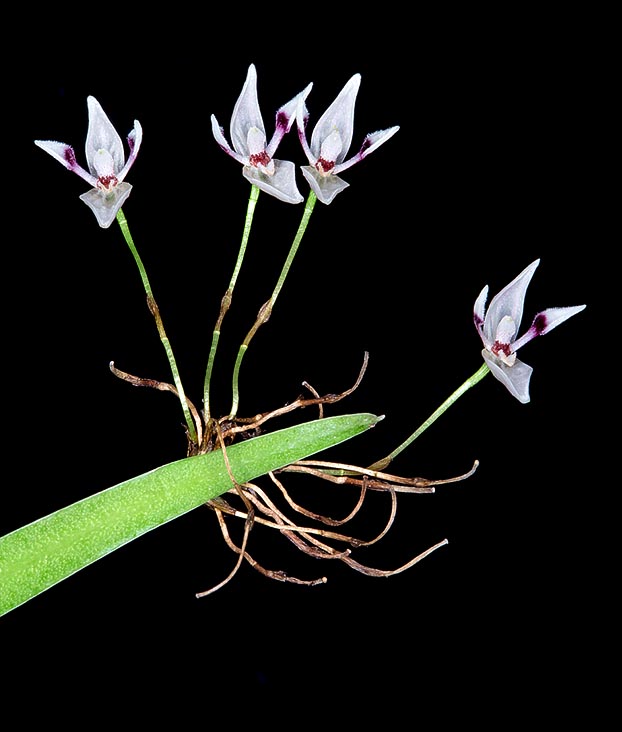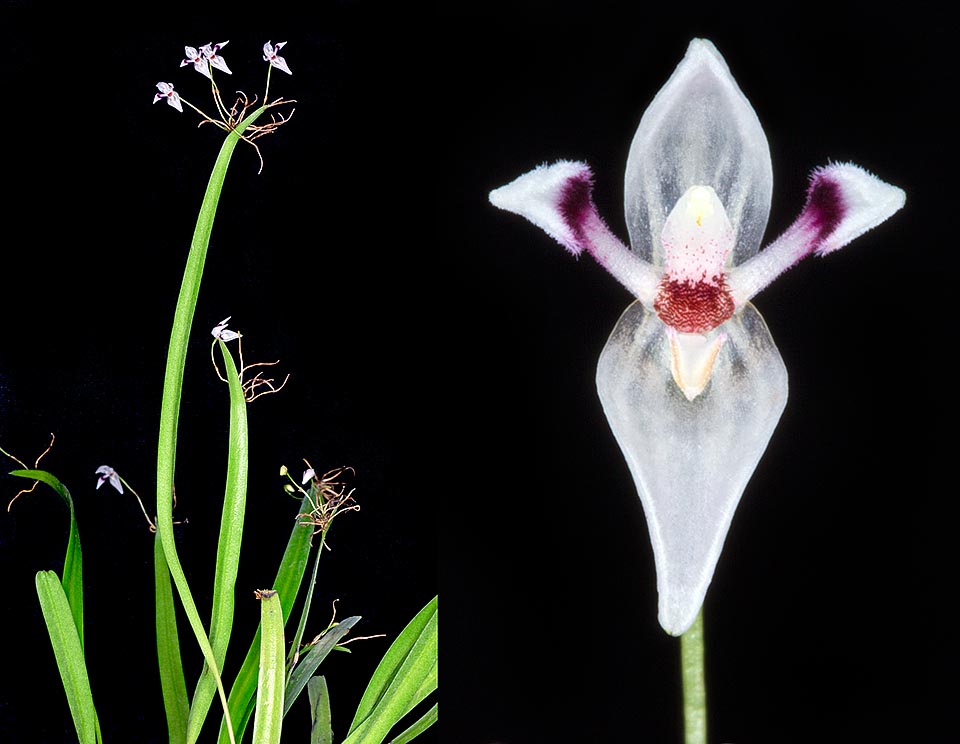Family : Orchidaceae

Text © Pietro Puccio

English translation by Mario Beltramini
The species is native to Ecuador (Esmeraldas) where it grows on the trees of the nebular forest around the 800 m of altitude.
The name of the genus comes after some from the combination of the Greek substantives “πλευρόν” (pleurόn) = rib, vein and “θαλλός” (thallόs) = stem, with reference to the stems of some species, after others from “πλευρόν” (pleurόn) = with the meaning of “side” and from the verb “θάλλω” (thallo) = to bloom, with reference to the position of the flowers at the conjunction between steam and leaf; the specific name is the Latin substantive “aspegillum” = aspersorium, implement used for spraying blessed water on persons or things, formed by a rod ending in a metallic holed sphere or in a tuft of bristles, with reference to the numerous floral peduncles persisting at the apex of the leaf.

Pleurothallis aspergillum is an Ecuador nebular forest cespitose epiphyte © Giuseppe Mazza
Fascicular inflorescence on the median vein of the leaf, at 1-1,5 cm from the apex, with numerous flowers, of about 1 cm of diameter, of white colour with purple spot on the petals and orange at the base of the labellum, that open gradually; peduncle, pedicel and ovary 2-2,5 cm long.
Dorsal ovate sepal with obtuse apex, concave, 6,5 mm long and 3 mm broad, lateral sepals merged to form an ovate synsepal with obtuse apex, concave, 7 mm long and 4 mm broad, ovate-falcate petals with acute apex and ciliate margins, 6,5 mm long and 1,5 mm broad, ovate labellum with acute apex and ciliate margins, 2,5 mm long and 1,5 mm broad, and 2,5 mm long column.
It reproduces by seed, in vitro, and by division, with each section provided of at least 3-4 stems.
Floriferous orchid with tiny flowers produced for long time at the apex of the leaf, requires a shady and aerated location of cultivation, medium-high day temperatures, 24-32 °C, with lowest night winter ones preferably over the 18 °C, even if it can stand some degrees less, and constant high humidity, 80-90%. Regular waterings and nebulizations in order to maintain the substratum constantly humid, but without stagnations, utilizing rain water, by reverse osmosis or demineralized. It can be cultivated in pots or baskets with compost formed by medium sliced bark fragments, sphagnum and inerts to favour the drainage and the aeration of the roots, as well as mounted on logs or rafts covered by sphagnum.

5-12 cm erect stems, close and thin. Fascicular inflorescence on the median vein of the leaf, 8-20 cm long, at 1-1,5 cm from the apex. Numerous flowers of about 1 cm © Giuseppe Mazza
Synonyms: Colombiana aspergillum (Luer & Hirtz) Luer (2004).
→ For general notions about ORCHIDACEAE please click here.
